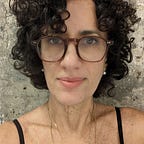Educators as creative collaborators
The story behind Story Design Lab, a practical guide to leading inquiry and visual storytelling projects in education.
UPDATE: eBook for sale at Gumroad
In 2014 I found myself working in the communications department of a K-12 school in Rio de Janeiro. My background was in editorial design — in fact I had spent the previous 25 years working as an art director of magazines, and had run a successful design company between Rio and New York. Visual storytelling was my specialty, and the confluence of technology and media, both in possibilities and in consequences, was a big interest at that point.
That particular school, like many in Rio, was a very low-tech environment in those days. Soon I began working to connect the school with the digital culture, and bring digital fluency to the whole community. I jumped at a chance to become the Ed Tech specialist and coach; the role of technology in education, as well as the need to educate people about the social implications of technology, became the center of my PD and curriculum development efforts.
My vision of the role of digital culture in education was completely informed by my previous professional experience. More than just using digital tools to streamline collaboration or academic processes, I wanted teachers to embrace the creative possibilities of technology, and, in particular, storytelling as a path to meaningful learning and active participation in society. Instead of simply teaching them about tools I wanted to impart the fact that, in a complex informational context, it is essential to develop critical reading and the conscious and ethical use of information, as well as to understand and master the techniques for producing and circulating content. I dreamed of classrooms that could replicate the messy, creative collaboration I had found in design studios and newsrooms, where we investigated different topics and created visual stories in order to help people understand and engage with different issues in their communities and beyond.
In working with teachers, however, I encountered many challenges. Because of low digital fluency and inexperience with creative strategies and tools, teachers were wary of designing creative storytelling projects. The lack of a framework by which to critically analyze visual productions also meant that teachers had difficulty proposing and assessing such projects. And, when they did, failure to sustain a proper investigation and production sequence meant that often projects had underwhelming results. Finally, there was a widespread perception that media creation projects were “special” projects that were either fun add-ons at the end of a unit, or reserved for year-end school shows. And, in many cases, delegated to media specialists.
Better results came from one-on-one coaching and acting as a mentor on creative projects. I soon realised that, if I wanted teachers to embrace media creation as an everyday strategy that could lead to deeper learning, they would need not only to learn about structure and best practices, but also the chance to experiment with media creation themselves. I started a series of workshops based on this idea, aiming to let teachers have hands-on understanding of the “create to learn” process — from investigating to sketching ideas and assembling the final product.
Over the years I conducted many workshops throughout Brazil and in international events such as NAMLE. Consistently, teachers felt encouraged and empowered by analyzing successful story design examples and a simple series of best practices, and by creating media themselves to model the student experience.
This experience shows that when we promote the exchange of knowledge between media professionals and educators, we can work together to increase information literacy and bring digital storytelling to the classroom. Story Design Lab is a book and a workshop that encapsulate all I have learned along this process, and aims to encourage and support teachers as they embark on visual media projects with their students.
Please watch the video below to learn more about the project. You can purchase the ebook here.
This work was produced as an assignment for the Digital Authorship seminar, part of the Graduate Certificate in Digital Literacy at the University of Rhode Island, in which we explore digital and media literacy through focusing on the critical and creative practices of self-expression, advocacy, and the advancement of learning communities.
